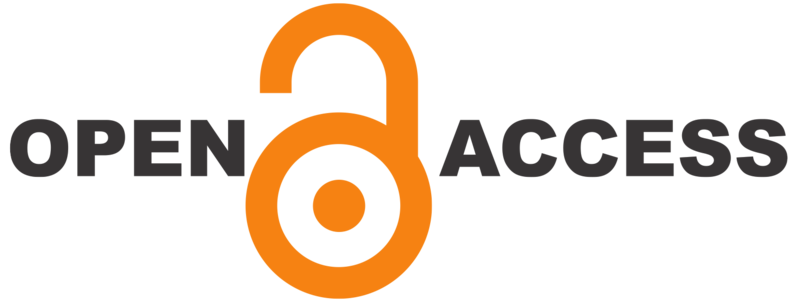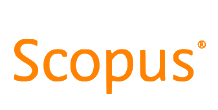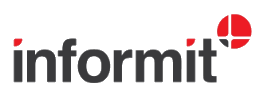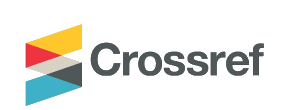Driving institutional engagement in WIL: Enhancing graduate employability
DOI:
https://doi.org/10.21153/jtlge2015vol6no1art577Keywords:
work integrated learning, graduate employability, authentic learning, partnershipsAbstract
Authentic learning experiences that replicate workplace settings are essential elements of the student experience for optimising graduate employability outcomes. Work Integrated Learning (WIL) supports the development of generic attributes which are highly regarded by employers through embedding authentic learning experiences in curricular and co-curricular programs. The regulatory and standards-based environment which monitors and controls higher education institutions' operations is increasingly focussing on WIL and the employability capabilities of graduates. In addition, external stakeholders such as employers and community agencies expect that graduates are prepared for a global and uncertain job market. The ultimate aim is to build a competitive and sustainable Australian economy through ensuring a highly-skilled population. Higher education is considered a key mechanism for achieving this ambition. Reconceptualising curriculum development and assessment strategies is required in order to address these societal demands.
Embedding the development of employability capabilities in curriculum to ensure work-ready graduates is a priority for Curtin University as it aspires to provide authentic learning experiences where students apply theoretical concepts in real-world settings. Scaffolding skill development across curriculum is fundamental to quality curriculum design. Flexible industry and community partnerships are integral to implementing a practice-based curriculum, enabling the development of professional practice to be an integral component of the degree program. This paper presents a three-year Strategic Project, which aimed to enrich the student experience through establishing an institutional framework for WIL, as a case study to inform further WIL initiatives. It outlines strategies implemented to achieve the strategic goals, to introduce innovative approaches for establishing an institutional framework, and to enhance the student experience through WIL.
Metrics
References
Barber, M., Donnelly, K., & Rizvi, S. (2013). An avalanche is coming: Higher education and the revolution ahead. London, England: Institute for Public Policy Research.
Bosco, A., & Ferns, S. (2014). Embedding authentic assessment in work integrated learning assessment. Asia Pacific Journal of Cooperative Education. In Press.
Curtin University. (2014a). The WIL Guidelines. https://ctl.dev.curtin.edu.au/wil/local/docs/WIL_Guidelines_pdf
Curtin University. (2014b). Teaching and Learning Handbook. http://ctl.curtin.edu.au/professional_development/tl_handbook.cfm
DeZure, D. (Ed.). (2000). Learning from change. Stylus Publishing: Virginia, USA.
Edwards, D., Perkins, K., Pearce, J., & Hong, J. (2015). Work integrated learning in STEM in Australian universities: Final Report. Office of the Chief Scientist. ACER.
Ernst & Young. (2012). University of the future: A thousand year old industry on the cusp of profound change. Retrieved from http://www.ey.com/Publication/vwLUAssets/University_of_the_future/$FILE/Universit y_of_the_future_2012.pdf
EY Megatrends (2015). Making sense of a world in motion. EYGM Ltd. http://www.ey.com/Publication/vwLUAssets/ey-megatrends-report-2015/$FILE/eymegatrends-report-2015.pdf
Ferns, S., Campbell, M., & Zegwaard, K. (2014a). Work integrated learning. In S. Ferns (Ed.), Work integrated learning in the curriculum HERDSA Guide. NSW: Higher Education and Development Society of Australasia Inc.
Ferns, S., Le Clus, M., Lilly, L., Cooper, L., Murphy, M., Rowbottom, D., O’Shaughnessy, A., Sher, K., & Soh, J. (2014b). A strategic approach for building partnerships to enhance graduate employability: Driving institutional engagement. ACEN Conference. Gold Coast.
Ferns, S., & Moore, K. (2012). Assessing student outcomes in fieldwork placements: An overview of current practice. Asia-Pacific Journal of Cooperative Education, 13(4). 207–224.
Ferns, S., Smith, C., & Russell, L. (2014c). Complex problem complex research design: Researching the impact of WIL on employability. WACE 10th International Symposium on Cooperative Education & Work-integrated Learning. University West Trollhattan,Sweden. http://www.waceinc.org/uwest2014/proceedings/Australia/Sonia%20Ferns%20%20Australia.pdf
Foundation for Young Australians. (2015). The new work order: Ensuring young Australians have skills and experience for the jobs of the future, not the past. Retrieved from http://www.acara.edu.au/verve/_resources/fya-future-of-work-report-final-lr.pdf
Fullen, M., & Scott, G. (2009). Turnaround leadership. Jossey-Bass: San Francisco, CA.
George, C., Collins, D., Gill, B., & Cole, K. (1987). Supervision in action: The art of managing others. New Jersey, USA: Prentice-Hall.
Gladwell, M. (2001). The tipping point: How little things can make a big difference. London, UK: Abacus.
Hagel, J., Brown, J.S., Mathew, R., Wooll, M., & Tsu, W. (2014). The lifetime learner: A journey through the future of postsecondary education. Deloitte University Press.
Hodges, D. (2011). The assessment of student learning in cooperative and work-integrated education. International Handbook for Cooperative & Work-integrated Education. 2nd Edition. World Association for Cooperative Education Inc., 53–62.
Kay, J., Russell, L., Winchester-Seeto, T., Rowe, A., & Le Clus, M. (2014). External stakeholders in WIL. In S. Ferns (Ed.), Work integrated learning in the curriculum HERDSA Guide. NSW: Higher Education and Development Society of Australasia Inc.
McNamara, J. (2011). The challenge of assessing professional competence in work integrated learning. Assessment & Evaluation in Higher Education. 38(2),183–197. doi/abs/10.1080/02602938.2011.618878
Mueller, J. (2012). Authentic assessment toolbox: What is authentic assessment? Retrieved February 18, 2013, from http://jfmueller.faculty.noctrl.edu/toolbox/whatisit.htm#top
Senge, P. (1994). The fifth discipline fieldbook: Strategies and tools for building a learning organisation. London, UK: Nicholas Brealy Publishing.
Shavelson, R. J., Klein, S., & Benjamin, R. (2009). The limitations of portfolios. (October 16). Retrieved February 18, 2014, from http://www.insidehighered.com/views/2009/10/16/shavelson
Smith, C., Ferns, S., & Russell, L. (2014). Assessing the impact of work integrated learning on student work-readiness. Final Report. Sydney, NSW: Office of Learning and Teaching.
Thomas, L. (2012). Building student engagement and belonging in higher education at a time of change: A summary of findings and recommendations from what works? Student Retention & Success programme. Commissioned by the Paul Hamlyn Foundation and the Paul Hamlyn Foundation. York, United Kingdom: Paul Hamlyn Foundation
Universities Australia. (2014a). Statement of Intent. Retrieved from http://cdn1.acen.edu.au/wp-content/uploads/2013/03/WIL-statement-of-intent.pdf
Universities Australia. (2014b). National WIL Strategy. Retrieved from http://cdn1.acen.edu.au/wp-content/uploads/2015/03/National-WIL-Strategy-inuniversity-education-032015.pdf
van Rooijen, M. (2011). Transforming 21st century engagement: From work-integrated learning (WIL) to learning-integrated work (LIW). Journal of Cooperative Education and Internships, 45(01), 5–10.
Varghese, N. (2011). Globalization and cross-border education: Challenges for the development of higher education in Commonwealth countries. UNESCO and International Institute for Education Planning.
Yorke, M. (2011). Work-engaged learning: Towards a paradigm shift in assessment. Quality in Higher Education. 17(1), 117–130. Retrieved from http://www.uq.edu.au/teach/assessment/docs/brief-21-may2011.pdf
Yorke, M., & Knight, P. (2004). Learning, curriculum and employability in higher education. New York: Routledge Falmer.











